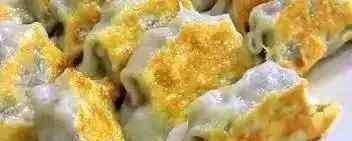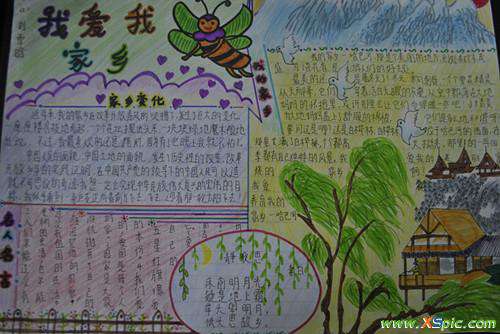题目:
关于中国传统文化与西方文化的英语作文开头已经写完,就把中间内容和结尾告诉我就行叻…内容是我们怎么样吸收西方文化发扬中国传统文化,要分成几个点写,
解答:
关于长城的传说 In the north of China, there lies a 6,700-kilometer-long (4,161-mile-long) ancient wall. Now well-known as the Great Wall of China, it starts at the Jiayuguan Pass of Gansu Province in the west and ends at the Shanhaiguan Pass of Hebei Province in the east. As one of the Eight Wonders in the world, the Great Wall of China has become the symbol of the Chinese nation and its culture. Lots of beautiful legends and stories about the Great Wall took place following along the construction, and since that time these stories have spread around the country. Those that happened during construction are abundant, such as Meng Jiangnu"s story and the legend of the Jiayuguan Pass. Meng Jiangnu"s story is the most famous and widely spread of all the legends about the Great Wall. The story happened during the Qin Dynasty (221BC-206BC). It tells of how Meng Jiangnu"s bitter weeping made a section of the Great Wall collapse. Meng Jiangnu"s huand Fan Qiliang was caught by federal officials and sent to build the Great Wall. Meng Jiangnu heard nothing from him after his departure, so she set out to look for him. Unfortunately, by the time she reached the great wall, she discovered that her huand had already died. Hearing the bad news, she cried her heart out. Her howl caused the collapse of a part of the Great Wall. This story indicates that the Great Wall is the production of tens of thousands of Chinese commoners. Another legend about the Jiayuguan Pass tells of a workman named Yi Kaizhan in the Ming Dynasty (1368BC-1644BC) who was proficient in arithmetic. He calculated that it would need 99,999 bricks to build the Jiayuguan Pass. The supervisor did not believe him and said if they miscalculated by even one brick, then all the workmen would be punished to do hard work for three years. After the completion of the project, one brick was left behind the Xiwong city gate. The supervisor was happy at the sight of the brick and ready to punish them. However Yi Kaizhan said with deliberation that the brick was put there by a supernatural being to fix the wall. A tiny move would cause the collapse of the wall. Therefore the brick was kept there and never moved. It can still be found there today on the tower of the Jiayuguan Pass. In addition to the above-mentioned stories about the construction of the Great Wall, there are also plenty of stories about current scenic spots. A famous one is the legend of the Beacon Tower. This story happened during the Western Zhou Dynasty (11th century BC-711 BC). King You had a queen named Bao Si, who was very pretty. King You liked her very much, however Bao Si never iled. An official gave a suggestion that setting the beacon tower on fire would frighten the King"s subjects, and might make the queen ile. King You liked the idea. The subjects were fooled and Bao Si iled at the sight of the chaos. Later enemies invaded Western Zhou, King You set the beacon tower on fire to ask for help. No subjects came to help because they had been fooled once before. Thus, King Zhou was killed by the enemy and Western Zhou came to an end. Beautiful stories and legends about the Great Wall help to keep alive Chinese history and culture. In each dynasty after the building of the Great Wall, many more stories were created and spread. 历史 No one can tell precisely when the building of the Great Wall was started but it is popularly believed that it originated as a military fortification against intrusion by tribes on the borders during the earlier Zhou Dynasty. Late in the Spring and Autumn Period (770 BC - 476 BC), the ducal states extended the defence work and built "great" structures to prevent the attacks from other states. It was not until the Qin Dynasty that the separate walls, constructed by the states of Qin, Yan and Zhao kingdoms, were connected to form a defensive system on the northern border of the country by Emperor Qin Shi Huang (also called Qin Shi Huangdi by westerners or the First Emperor). After the emperor unified the country in 214 BC, he ordered the construction of the wall. It took about ten years to finish and the wall stretched from Linzhao (in the eastern part of today"s Gansu Province) in the west to Liaodong (in today"s Jilin Province) in the east. The wall not only served as a defence in the north but also symbolized the power of the emperor. From the Qin Dynasty onwards, Xiongnu, an ancient tribe that lived in North China, frequently harassed the northern border of the country. During the Han Dynasty, Emperor Wu (Han Wu Di), sent three expeditions to fight against the Xiongnu in 127 BC, 121 BC and 119 BC. The Xiongnu were driven into the far north of the Gobi. To maintain the safety of the Hexi Corridor (today"s Gansu Province), the emperor ordered the extension of the Great Wall westward into the Hexi Corridor and Xinjiang region. The ruins of the beacon towers and debris of the Han Wall are still discernible in Dunhuang, Yumen and Yangguan. A recent report shows that ruins of the Han Wall have been discovered near Lopnur in China"s Xinjiang region. Further construction and extensions were made in the successive Northern Wei, Northern Qi and Sui dynasties. The present Great Wall in Beijing is mainly remains from the Ming Dynasty (1368 - 1644). During this period, bricks and granite were used when the workers laid the foundation of the wall and sophisticated designs and passes were built in the places of strategic importance. To strengthen the military control of the northern frontiers, the Ming authorities divided the Great Wall into nine zones and placed each under the control of a Zhen (garrison headquarters). The Ming Wall starts from Yalujiang River (in today"s Heilongjiang Province), via today"s Liaoning, Hebei, Inner Mongolia, Shanxi, Shaanxi, Ningxia provinces, to Guansu. The total length reaches 12,700 li (over 5,000 kilometers). The Shanhaiguan Pass and the Jiayuguan Pass are two well-preserved passes at either end. Today, the Wall has become a must-see for every visitor to China. Few can help saying "Wow!" when they stand on top of a beacon tower and look at this giant dragon. For centuries, the wall served succeeding dynasties as an efficient military defence. However, it was only when a dynasty had weakened from within that invaders from the north were able to advance and conquer. Both the Mongols (Yuan Dynasty, 1271-1368) and the Manchurians (Qing Dynasty, 1644-1911) were able take power because of weakness of the government and poverty of the people but never due to any possibility of weakness of the Wall.或者The Great Wall was first built in the Spring and Autumn Period and it have a history over 2.000 years. The Great Wall, that is called “the ten-thousand-li Great Wall”, is actually more than 6000 kilometers long, 6-7 meters high and 4-5 meters wide. Every a few hundred meters along the Great Wall there are watchtowers. We Chinese are proud of in the Great wall because it is one of the wonders in the world and it stands for China.. Today the Great Wall becomes a famous place of interest in the world. Every year, hundreds of thousands of people, not only from China from also all over the world, come to visit it.
1.《中国的传统文化作文 关于中国传统文化与西方文化的英语作文》援引自互联网,旨在传递更多网络信息知识,仅代表作者本人观点,与本网站无关,侵删请联系页脚下方联系方式。
2.《中国的传统文化作文 关于中国传统文化与西方文化的英语作文》仅供读者参考,本网站未对该内容进行证实,对其原创性、真实性、完整性、及时性不作任何保证。
3.文章转载时请保留本站内容来源地址,https://www.lu-xu.com/jiaoyu/562501.html








